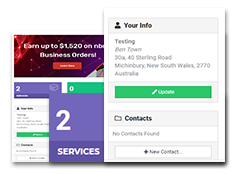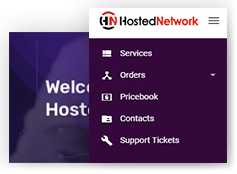MSPs are known as the external IT departments of small and medium-sized businesses (SMB).
But what if a business has an IT department already? Does this mean that they no longer need an MSP? The answer is no.
This is where co-managed IT services come in. Co-managed IT services is the collaborative partnership between an MSP and the internal IT teams of businesses. Handling all the essential areas of IT can be overwhelming for a tech team composed of just one or a few staff. Though some might think that only big companies can benefit from co-managed IT services, there are instances that small and medium-sized businesses (SMB) can benefit from it too.
If you’re looking at offering co-managed IT services, there are a few different things to consider before you jump right in. We’ve put together a few tips below to help you pull off a successful co-managed IT engagement.
1. Be prepared for the negative reactions
When you propose a co-managed IT model, the first impression that could get across your client’s internal IT team is that you’re there to replace them. Make sure you are prepared for situations like this and answer them the right way to ease any concerns.
The truth is you are not there to take over their roles but act as an extension of the team and help them address and overcome recurring problems and try a different approach in meeting their team’s objectives.
In effect you’re there to enable them to focus on the areas they are good at and supplement them in other areas to ease their load. For example you might focus entirely on server management while their internal IT is responsible for all desktop support. Though it might take a while before you get their full trust and cooperation, you just have to be patient in cultivating your relationship. Nothing can ever create a strong partnership than mutual and consistent sharing of knowledge and expertise.
The key here is to keep the internal IT team onside. You need to sell your co-managed offering to them just as much as to your clients executives.
2. Enhance your expertise
If you are about to complement the IT teams of your clients, you need to make sure that you are equipped enough in delivering the additional support they might require – and this support may vary from deal to deal.
Your customers might need help in specific areas like monitoring systems, help desk support, IT security, BCDR, hardware support, or cloud backup among other things. As their trusted IT advisor, you should have the expertise to know how to effectively fill the gaps in your clients’ existing systems and processes for the area you are supporting.
Once you’ve built the credibility of your services and your skills, the hardest part is over. Just remember that it’s critical to set clear expectations during the early stages of your co-managed engagement, it’ll keep everyone on the same page and avoid a lot of headache.
3. Close communication gaps
It’s possible (and understandable) to have miscommunications with your client especially at the beginning of your co-managed IT journey. But the good news is you can prevent this from happening if you address communication gaps in the early stage of your partnership.
Meet with your customer’s internal IT team and understand their needs and goals to be able to come up with the perfect onboarding and integration plan. Setting clear timeframes will also help to manage each team’s expectations. Ensuring the implementation of your strategies goes smoothly and keeping you on the same page as your customer.
As our CEO – Ben Town likes to say “Expectations fail without communication”
4. Always stay up to date on the Latest MSP Technology Trends
Small internal IT teams often struggle to stay on top of industry trends as they are often moving from one fire to the next. Meanwhile as an MSP you and your team get exposure to many different problems and technological solutions which positions you and your team perfectly to be the internal IT team’s trusted advisor.
As their trusted advisor, you must go beyond what is expected of a regular provider but act as the extension of their team. You couldn’t do this if you’re behind all the latest technologies emerging. A great way to define your competitive edge is by being experts in what you do and efficiently assessing your customers’ needs. Being always “in the know” does not mean you have to know everything, instead you just need to be smart enough to understand the clients requirements and the outcomes they are looking for and help to position suitable solutions.
5. Know your target market
Positioning your co-managed IT services can be tough, especially when you have no idea where your customers are coming from.
Whether you are planning to offer this to your existing customers or new prospects that you’re developing, you must see to it that you define your target market clearly enough to be able to send them a pitch that is targeted to their needs. This alone is often enough to differentiate your proposal from the competition.
If you know their target market you’ll be able to understand their approach to business, their terminology and the pain points that they suffer from and be able to provide a better level of service more targeted to their needs.
Conclusion
Co-Managed IT is a different mindset to your traditional MSP offering.
It might be hard at first, but if done the right way, co-managed IT could be extremely beneficial to your MSP by opening new opportunities with your client accounts that you typically wouldn’t have in your MSP business.
As the saying goes “where there is complexity – there is margin to be made!”
Remember these tips as you start taking the co-managed IT path. Nothing worth having comes easy, as they say, so be persistent and true to your undertaking.
 Contact us
Contact us  Partner Login
Partner Login  Service Status
Service Status 


 July 14, 2021
July 14, 2021
 Madeleane Abejero
Madeleane Abejero
 3 mins
3 mins